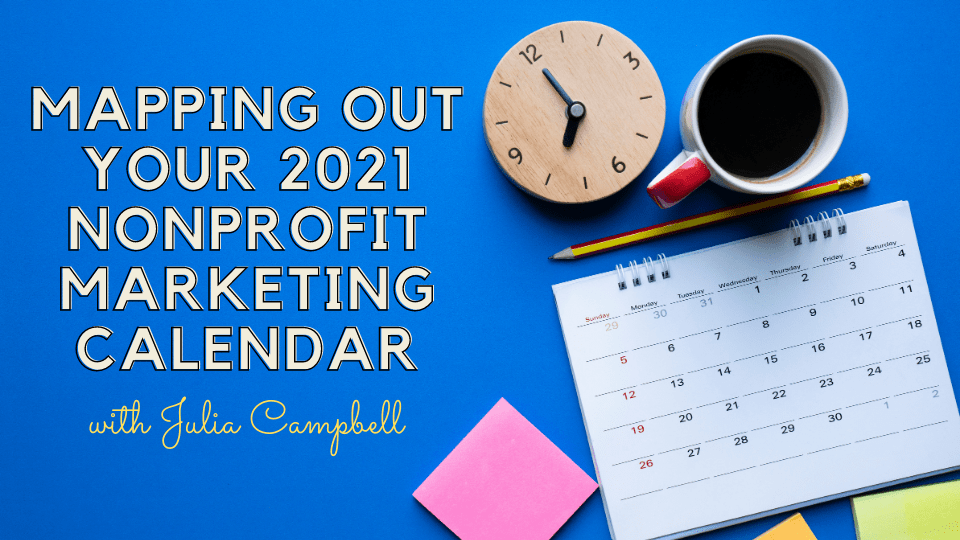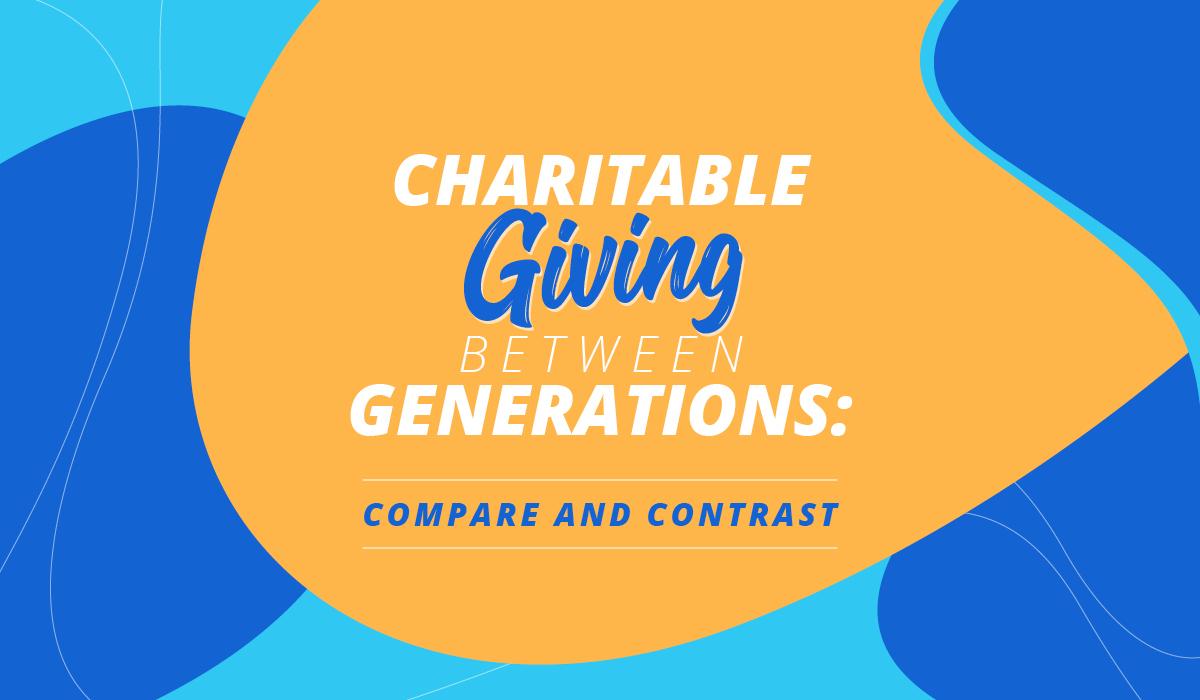 It’s not too late – Did you get a chance to check out my newest online course? Details are here: Mapping Out Your 2021 Nonprofit Marketing Calendar -Your step-by-step roadmap to crush your nonprofit marketing goals this year!
It’s not too late – Did you get a chance to check out my newest online course? Details are here: Mapping Out Your 2021 Nonprofit Marketing Calendar -Your step-by-step roadmap to crush your nonprofit marketing goals this year!
This post is a guest blog by John Killoran of Snowball Fundraising
Donor acquisition is a key component of any fundraising effort. However, not all acquisition strategies will work with all donors.
That said, carefully craft your fundraising appeals with a particular audience in mind.
One of the most significant factors to consider here is the age of your donors and prospects.
Even with the move toward heavily virtual fundraising efforts, the way you interact with and target each generation should differ based on research and previous engagements.
At Snowball, we have experience helping nonprofits target donors of every generation, and we’ve put together this helpful guide to help you do the same.
Each generation has its own overarching characteristics and defining traits.
When it comes to a careful analysis of charitable giving between these groups, we’ve noticed that they have three main differences that are likely to impact your fundraising strategy: giving method, gift size, and donation frequency.
By taking a closer look at generational giving habits, you can set yourself up for greater fundraising success through targeted and relevant fundraising appeals.
To get started, we’ll discuss each of the following generations and their giving habits in further detail:
- Silent Generation
- Baby Boomers
- Generation X
- Millennials
- Generation Z
Are you ready to learn more about charitable giving between the different generations? Let’s jump in.

1. Silent Generation
The Silent Generation (also known as the Traditionalists or the Matures) consists of individuals who were born between 1928 and 1945. Currently, these individuals are between the ages of 75 and 92 years old, and as of 2020, the Silent Generation makes up approximately 7% of the total U.S. population.
Individuals born before 1928 are considered to be part of the G.I. Generation, although they make up less than 1% of the current U.S. population and for the sake of this guide, we’ll lump them in with the Silent Generation.
The Silent Generation will likely prefer to receive physical copies of an organization’s donation letters rather than be mailed a digital version to their inbox.
Then, this generation will typically send a physical check in response to a fundraising request, rather than make an online donation.
However, like with any donor, it’s a good idea to incorporate a multi-channel strategy when targeting your older generations. Even if they’re not as likely to give using new technology and online giving methods as other generations, those extra touchpoints can be a significant factor in building your relationship with these donors. Additional communications can help position your organization as a worthwhile, trusted brand.

2. Baby Boomers
The Baby Boomer generation consists of individuals who were born between 1946 and 1964. Currently, these individuals are between the ages of 56 and 74 years old, and they make up approximately 21% of the total U.S. population.
According to Double the Donation’s recent fundraising statistics, Baby Boomers are more likely to be inspired to give through email (33%) than social media (19%) or direct mail appeals (18%). Then, once inspiration has struck, Baby Boomers tend to prefer to make their gifts online through an easy-to-use donation page.
These donors are loyal supporters of their favorite charities, so take a strategic approach to building a relationship with them after their initial gift and keep them involved with your mission.

3. Generation X
Generation X (also known as the Thirteeners) consists of individuals who were born between 1965 and 1976. Currently, these individuals are between the ages of 40 and 55, and they make up approximately 20% of the total U.S. population.
While this group did not grow up around the internet, they’ve certainly got on board with what new technology has to offer.
In fact, more than 88% of Generation X is on Facebook, making it a key opportunity for fundraising and engagement strategies for nonprofits of all shapes and sizes. And although Facebook as a fundraising platform has its pros and cons, it’s raised more than $4 billion since the inception of its donation tools—much of that coming from Gen X supporters.
Generation X is big on transparency from the organizations they support, but when they find a cause they care about, they’re more likely to make larger, regular donations than other generations are.

4. Millennials
The Millennial generation (also known as Generation Y) consists of individuals who were born between 1977 and 1995. Currently, these individuals are between the ages of 24 and 39, and they make up approximately 25% of the total U.S. population.
When it comes to charitable giving and fundraising participation, studies show that 43% of Millennial donors have reported being most inspired to give through social media.
However, since many of your Gen X and Baby Boomer supporters are taking to social media platforms as well, it’s important that you target your strategy to the specific groups you’d like to secure.. When you target specific audience segments rather than taking a one-size-fits-all approach to social media, you can start to see an even higher ROI than ever before.
For example, Millennials are more likely to give to your campaign because someone in their network has promoted it, rather than if they encounter a direct request from your organization.
As such, when targeting a Millennial audience, be sure to mobilize your supporters by encouraging them to share your fundraisers on their own personal social media pages with their friends, family members, and colleagues.

5. Generation Z
Generation Z (also known as the New Silent Generation or the “Philanthroteens”) consists of individuals who were born between 1996 and 2012. Currently, these individuals are between the ages of 8 and 23, and they make up approximately 26% of the total U.S. population.
Gen Z is currently the youngest generation of donors in the world. Following Gen Z is Generation Alpha, although members of this group are currently under 10 years old and have yet to join the charitable giving movement. However, when they do, you’re likely to notice some of the same characteristics present in Gen Z.
Individuals within Generation Z have grown up around technology and are extremely comfortable with using it.
Thus, donors within this age group are quick to jump on board with new fundraising trends and tools.
For example, Snowball’s text-to-give guide explains that while you might have to walk your older supporters through giving via text message step-by-step, your younger supporters (like Millennials, Gen Z, and beyond) will find the process intuitive and familiar.
Understanding generational differences is only one piece of a greater donor segmentation strategy. In fact, this guide recommends that fundraisers segment their audience by preferred giving method, communication preferences, engagement history, and even other demographic features to ensure an overall look at each supporter.
However, age and generational markers offer a fantastic place to start—especially if your donor network encompasses a wide range of support. Good luck!
Author: John Killoran
John Killoran is an inventor, entrepreneur, and the Chairman of Clover Leaf Solutions, a national lab services company. He currently leads Clover Leaf’s investment in Snowball Fundraising, an online fundraising platform for nonprofit organizations.
Snowball was one of John’s first public innovations; it’s a fundraising platform that offers text-to-give, online giving, events, and peer-to-peer fundraising tools for nonprofits. By making giving simple, Snowball increases the donations that these organizations can raise online. The Snowball effect is real! John founded Snowball in 2011. Now, it serves over 7,000 nonprofits and is the #1 nonprofit fundraising platform.
